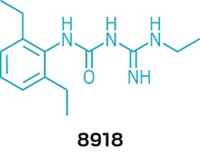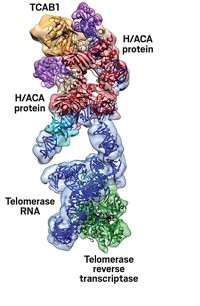Advertisement
Grab your lab coat. Let's get started
Welcome!
Welcome!
Create an account below to get 6 C&EN articles per month, receive newsletters and more - all free.
It seems this is your first time logging in online. Please enter the following information to continue.
As an ACS member you automatically get access to this site. All we need is few more details to create your reading experience.
Not you? Sign in with a different account.
Not you? Sign in with a different account.
ERROR 1
ERROR 1
ERROR 2
ERROR 2
ERROR 2
ERROR 2
ERROR 2
Password and Confirm password must match.
If you have an ACS member number, please enter it here so we can link this account to your membership. (optional)
ERROR 2
ACS values your privacy. By submitting your information, you are gaining access to C&EN and subscribing to our weekly newsletter. We use the information you provide to make your reading experience better, and we will never sell your data to third party members.
Synthesis
Estrogen Factory
Crystal structure of an important breast cancer target is solved
by Sarah Everts
January 12, 2009
| A version of this story appeared in
Volume 87, Issue 2
AFTER DECADES of unsuccessful attempts to visualize the structure of an important enzyme implicated in three-quarters of all human breast cancers, researchers are now reporting the first X-ray crystal structure of this protein.
Debashis Ghosh of the Hauptman-Woodward Medical Research Institute, in Buffalo, and his colleagues solved the 2.9-Å structure of aromatase, the only enzyme in the animal world that can catalyze the biosynthesis of estrogens from androgens. They report the feat in Nature (2009, 457, 219).
Estrogen is overproduced in 75% of all breast cancers, and aromatase inhibitors are commonly prescribed because they increase the disease-free survival time of patients. Yet the structure of their membrane-bound enzyme target had remained unknown.
"This is a very significant achievement and one that has been of interest for a long time, since the 1970s," comments Angela H. Brodie, a University of Maryland researcher at the Greenbaum Cancer Center, in Baltimore, who developed the first aromatase inhibitors. Brodie notes that the crystal structure will not only inspire the development of new aromatase inhibitors, but also help unravel some unique chemistry performed by the enzyme.
In particular, aromatase catalyzes the three steps required to make estrone from androstenedione, each requiring O2 and a cofactor.
The final step is an unusual aromatization reaction that converts an aliphatic hydrocarbon ring to a phenol ring, notes Michael R. Waterman, a biochemist at Vanderbilt University School of Medicine, in an associated Nature commentary. "No other enzymes are known to catalyze such aromatization reactions."
Ghosh says he hopes to capture images of aromatization intermediates to unravel the mechanism of this unique reaction, as well as develop second-generation inhibitors of the enzyme.
The structure also "opens the way for crystallization of other similar enzymes involved in the biosynthesis of androgens, Brodie says. "Inhibitors developed against [one such] enzyme have potential for the treatment of prostate cancer."
"One of the most remarkable aspects of the work," Waterman adds, "is that the structure was determined for native aromatase isolated from human placenta, rather than using a recombinant protein that had been artificially constructed using genetic engineering techniques."
After Ghosh's lab had spent upwards of 15 years trying to crystallize this tricky membrane protein using a variety of strategies including recombinant methods, getting the protein the old-fashioned way was "the best solution," he notes.






Join the conversation
Contact the reporter
Submit a Letter to the Editor for publication
Engage with us on Twitter